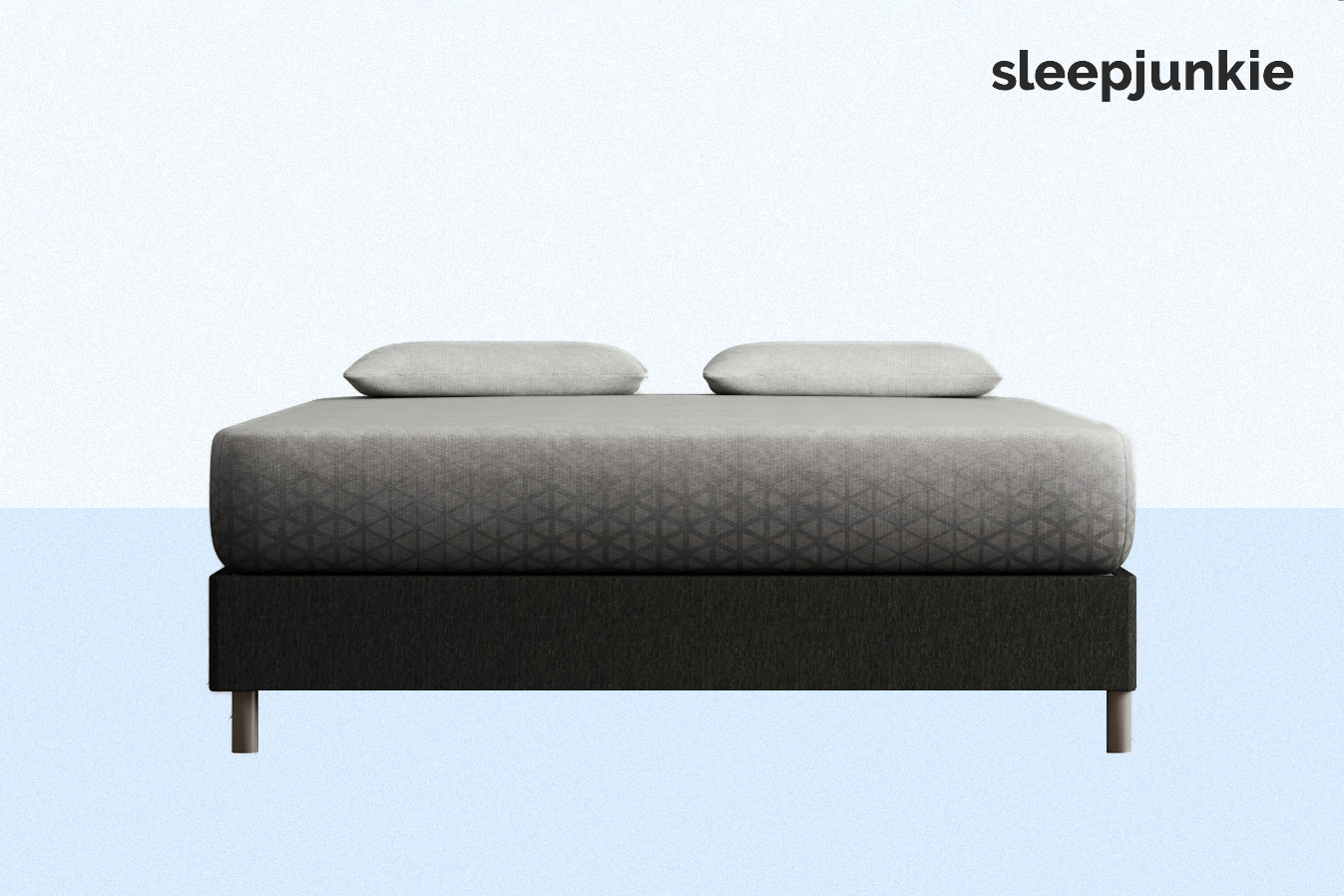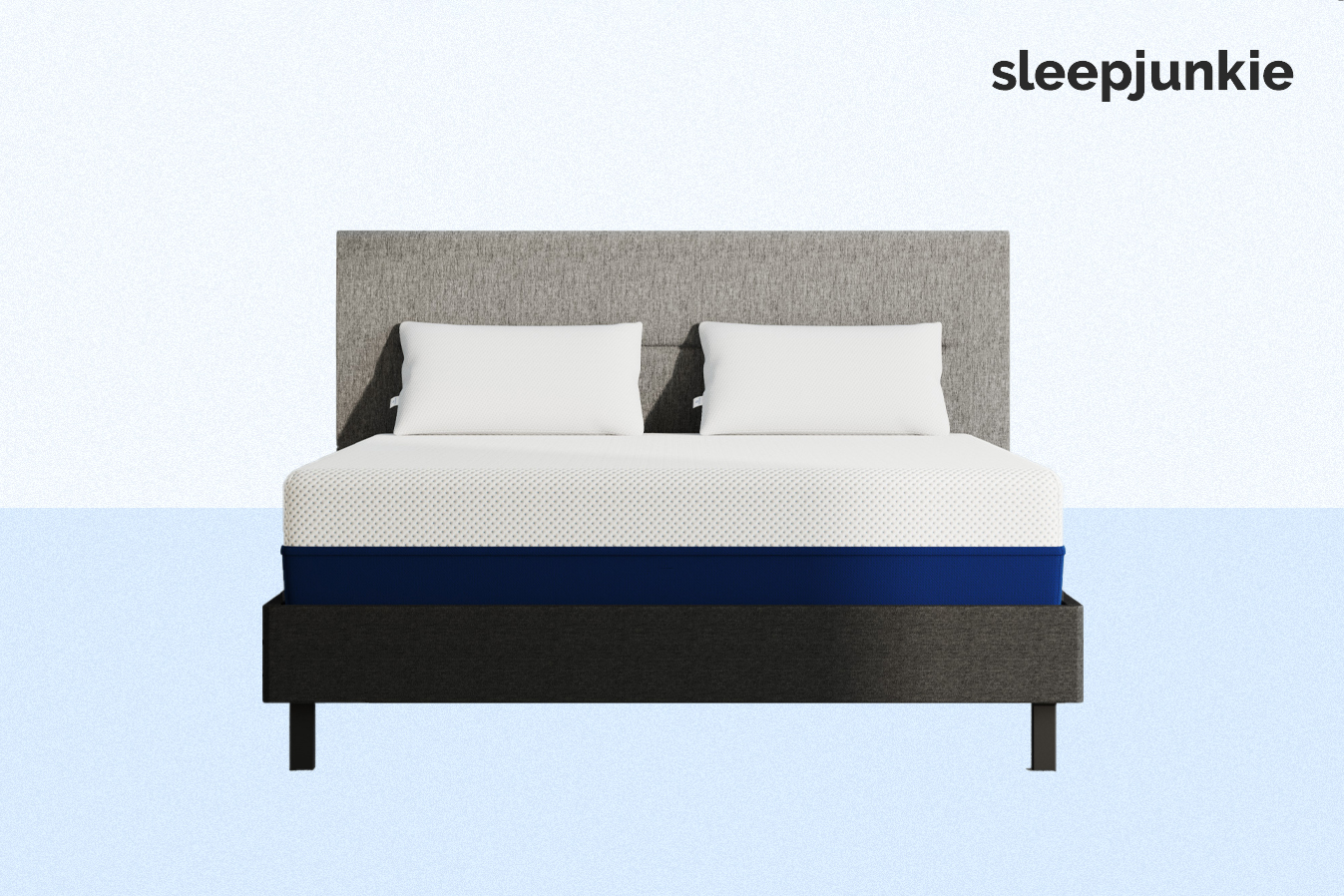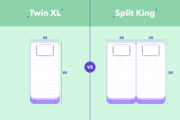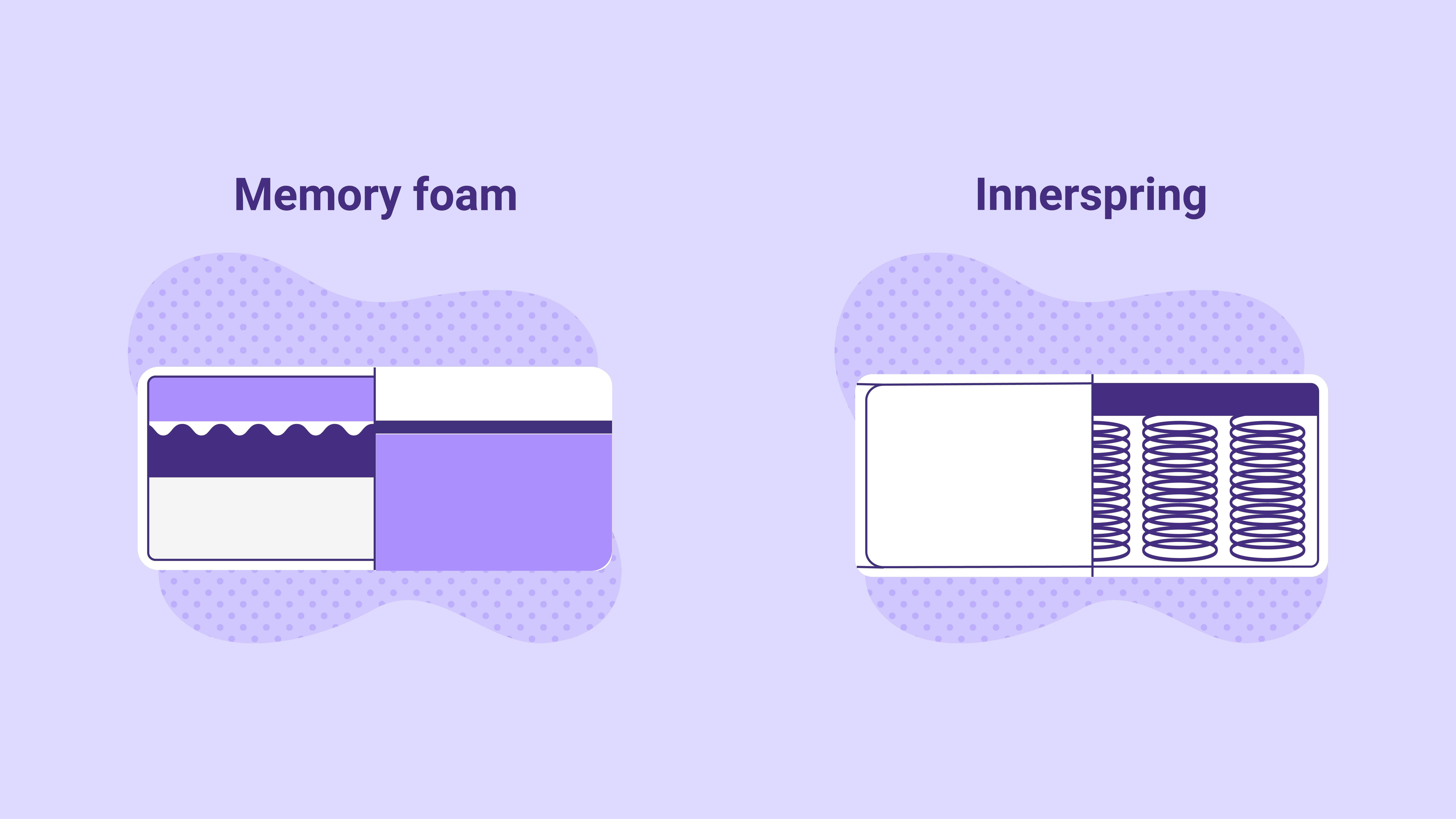
Gel Memory Foam vs. Innerspring Mattress: What’s the Difference?

- Innerspring and memory foam mattresses are popular choices; innerspring known for responsiveness and cool surface, while memory foam criticized for heat retention, leading to the rise of gel memory foam.
- Gel memory foam, developed to address heat concerns, provides a cooler surface by incorporating phase-changing materials in gel infusions, making it appealing, especially for hot sleepers.
- Understanding the qualities of gel memory foam and innerspring mattresses is essential for making an informed choice based on factors like firmness, durability, responsiveness, motion transfer, temperature, and cost.
Innerspring and memory foam mattresses are some of the most popular beds on the market. Traditional innerspring beds are known for their responsiveness and cool sleeping surface.
Critics of traditional memory foam mattresses cite a lack of airflow through the mattress. But in recent years, manufacturers have introduced gel memory foam beds. Gel memory foam provides sleepers with a cooler surface.
In our next article, we’ll take a look at the different qualities of gel memory foam and innerspring mattresses so you can decide which one is the best fit.
What is Gel Memory Foam?
In the 1960s, memory foam was developed by NASA to improve the comfort of astronauts during rocket take-offs. Now, memory foam beds are some of the most popular beds on the market. They are praised for their body-hugging qualities, which promote spinal alignment.
These beds provide sleepers with relief from pressure points in sensitive areas such as your hips, spine, and neck. Memory foam mattresses respond to your body heat to contour the curves. This can make hot sleepers feel sweaty throughout the night.
Gel memory foam mattresses are popular with hot sleepers seeking a cooling mattress. The gel infusions are added to the top layer of the bed to dissipate body heat.
These cooling gels are made with “phase-changing materials” (PCM). PCM is a combination of non-toxic chemicals that change from solid to liquid with heat.
The Zoma Mattress is one of the most well-designed gel memory foam mattresses on today’s market. With a medium feel, the Zoma Mattress can improve your sleep, muscle pain, and physical performance during the day.
Inside the Zoma Mattress is gel memory foam, Reactiv™ transition foam, and Support+ base foam. The mattress’s AirCloth cover is designed to draw body heat and moisture away from the body, ensuring you sleep cool all night.
The gel memory foam plays the biggest role in keeping you and your bed cold at night. The memory foam is cushiony and pressure-relieving while the gel infusions prevent the foam from overheating.
Adding Reactiv™ foam—a springy, responsive material—to the Zoma Mattress prevents you from sinking into your bed. It makes it easy to shift positions and get out of bed, too!
The Zoma’s Support+ base is crucial for aligning your spine and preventing issues like pain, stiffness, or soreness. This sturdy foam also fights off sags, lumps, and large indentations in your bed.
Zoma backs its classic memory foam mattress with a 100-night sleep trial and a 10-year warranty.
ZOMA MATTRESS
- Gel infusions prevents body heat from accumulating
- Transition layer keeps sleepers from feeling trapped in bed
- Mattress longevity extended by strong base foam
What is an Innerspring Mattress?
Innerspring mattresses are the most traditional mattress type. These beds were found in homes before the introduction of memory foam. Spring mattresses are made with a coil support layer and are known for their bouncy support.
There are different types of coils used in spring mattresses:
- Hourglass coils
- Pocketed coils
- Continuous coils
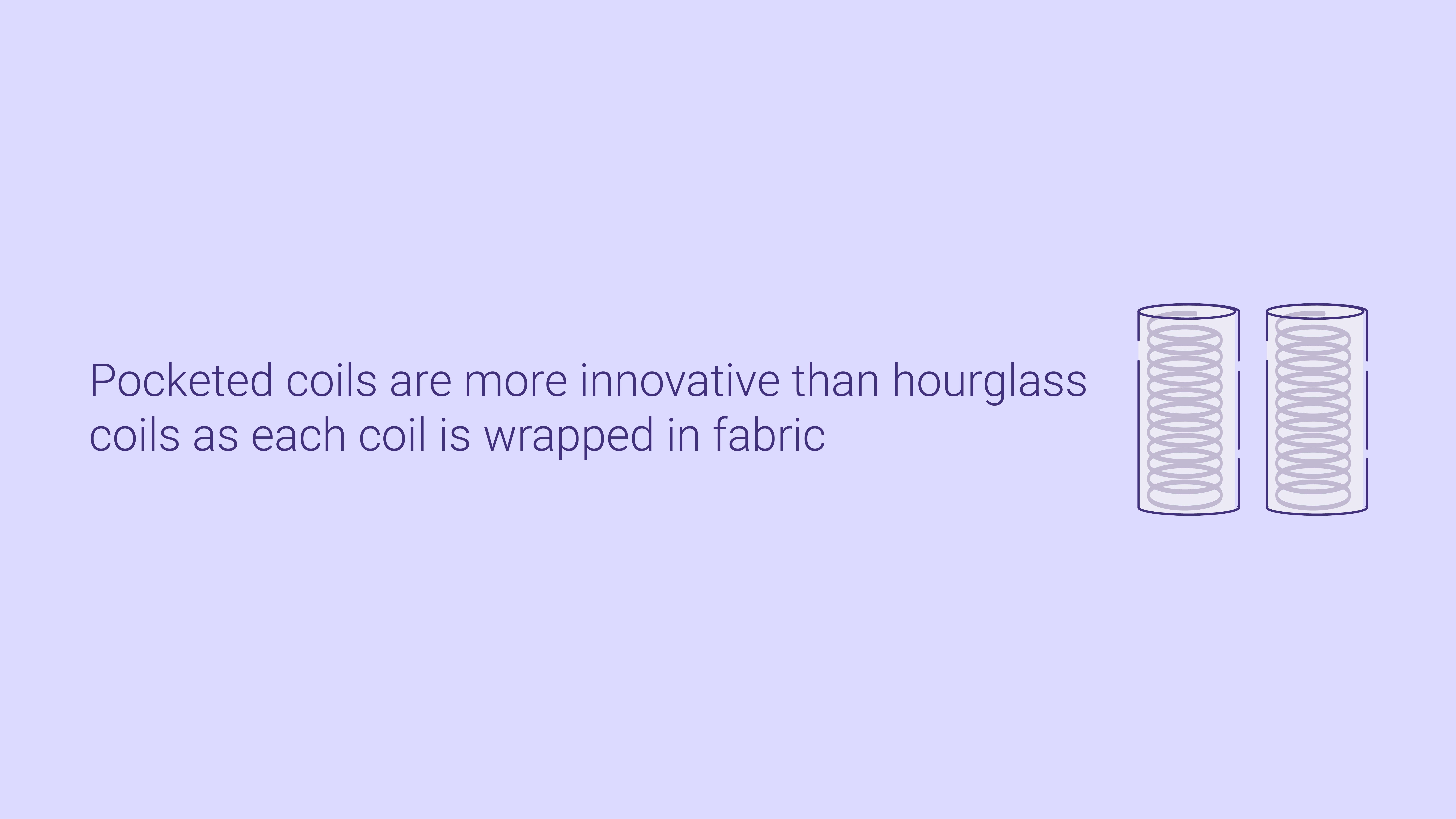
Hourglass Coils
Hourglass coils are the most common coils used. There are two types of hourglass coils—Bonnell and offset coils.
Bonnell coils are inexpensive to make and are usually found in older spring beds. These coils have a thin structure in the middle of the spring and are thicker near the top and bottom.
Offsets coils and Bonnell coils both have an hourglass shape. However, offset coils are flat at the bottom. Additionally, offset coils do not make as much noise as Bonnells do when you move around.
Pocketed Coils
Pocketed coils are more innovative than hourglass coils as each coil is wrapped in fabric. This design lets the coils respond to pressure individually. Pocket coils reduce motion transfer for less disruptive sleep.
Continuous Coils
Continuous coils have an s-shaped design used to construct on a single wire. They provide firm support and are beneficial for back pain sufferers. Continuous coils are not ideal for shaping the curves of your body.
The coil gauge or thickness of the coils determines the feel of your bed. Generally, the higher the coil gauge, the thinner the coils. Coils with a high gauge may not last as long as a bed with a low coil gauge. A mattress with lower coil gauges has thick springs and is usually more durable.
Many manufacturers use a mix of high and low-gauge coils for targeted support, excellent if you seek a mattress for back pain. Low-gauge coils may also provide your mattress with better edge support.
For a more thorough examination of innerspring beds, see our innerspring mattress buying guide.
Our favorite spring mattress is Amerisleep’s AS3 Hybrid, a plant-based bed with pocketed coils. Its medium firmness is a popular choice amongst side sleepers, combo sleepers, and couples.
At 12 inches thick, the AS3 Hybrid contains Bio-Pur® memory foam, Affinity foam, pocketed coils, and a foam base. It features a polyester cover that’s soft, durable, and moisture-resistant all at once.
Bio-Pur® is a plant-based memory foam made out of castor oil. Compared to other memory foams, Bio-Pur® is longer-lasting and won’t trap heat. It snaps back into place quickly so you don’t sink into bed or feel unable to move.
The Affinity foam in Amerisleep beds incorporate HIVE® technology. This support system is divided into five zones with different levels of cushioning or firmness to align your body.
Amerisleep wraps each steel coil in the AS3 Hybrid with a lightweight fabric for better support, motion isolation, and durability. They add extra-firm coils to either side of the bed for reliable edge support. This way, the sides of your bed don’t start sagging after only a few years of use.
At the base of the AS3 Hybrid is a thin foam which helps against sagging and general wear.
The AS3 Hybrid includes a 100-night sleep trial and a 20-year warranty.
AMERISLEEP AS3 HYBRID
- Memory foam is partly plant-based for greater sustainability and comfort
- Pocketed coils feature individual responsiveness and edge support
- Mattress cover promotes cool and comfortable sleep
Difference Between Gel Memory Foam and Spring Mattresses
Both innerspring and memory foam mattresses are popular choices among sleepers. They each have their own specific set of benefits to meet your sleeping preferences and can be one of the most comfortable mattresses.
Below, we compare these two mattresses so you can learn more about them before you buy your mattress.
Firmness
Spring mattresses are firmer than their foam counterparts. They are an excellent option for stomach sleepers and plus-sized individuals. An extra firm mattress keeps heavy sleepers from sinking too far into the mattress. An extra-firm bed also may promote better spinal alignment.
Sometimes beds that are too firm can put too much pressure on your joints. Memory foam beds have firmness options that vary from medium-firm to ultra-soft. Also, foam mattresses provide an even sleeping surface while also cradling sensitive areas.
Durability
How long your mattress should last can determine whether or not it’s a worthwhile purchase.
Innerspring mattresses do not have a long lifespan. It’s common for the coils to break or lose flexibility due to excessive weight. A spring mattress will last for 3 to 6 years, depending upon its quality. Foam mattresses do not wear down easily, especially if they have a high-density foam core. Memory foam mattresses last eight years or more when properly maintained.
Responsiveness
Memory foam beds can make sleepers feel like they are sinking while asleep. They are a slow-response mattress, and a sleeper can feel stuck if they move. Innerspring is a more responsive bed since they have more bounce. This makes it easier for sleepers to climb in and out of bed.
Motion Transfer
Spring mattresses may cause sleeping interruptions because they lack motion isolation. Some pocket spring mattresses have individually wrapped coils to limit motion isolation. However, foam mattresses are still a better option if you share the bed.
Movement does not transfer as easily on a foam mattress as innerspring beds. Instead, memory foam absorbs pressure at the point of impact. Many find a memory foam bed is the best mattress for couples or sleepers who toss and turn.
Temperature
A spring mattress provides plenty of airflow due to the large empty spaces between coils. As the air moves, it takes the heat away from the mattress surface. This heat dispersion keeps the sleeping environment cool.
Gel memory foam may keep sleepers cool. However, it does not have as many air pockets as other mattress types. Some people may find a gel foam mattress is still too hot, while others find its the perfect cooling mattress.
Cost
Gel memory foam tends to be more expensive than other mattress types, although many are still excellent budget mattresses. Gel memory foam can cost anywhere between $700-$1900.
Innerspring mattresses are an affordable option for people with a tight budget. Some innerspring beds cost as low as $500. Others may cost around $1,500 and above for high-end products.
FAQs
Who are memory foam mattresses best for?
Memory foam mattresses accommodate all kinds of sleepers. These beds come in a variety of firmness levels and support different body types.
Some memory foam beds may be too warm for hot sleepers. Memory foam retains body heat and can make your sleeping surface feel too hot. This can make it harder for hot sleepers to fall asleep and may cause you to wake up feeling sweaty.
What is a hybrid mattress?
A hybrid mattress combines the qualities of memory foam and innerspring mattresses. Sleepers experience great pressure relief and the bouncy support of traditional mattresses.
A hybrid mattress has pocketed coils in the mattress core and memory or latex foam in the comfort layers.
Who are spring mattresses best for?
Spring mattresses are best suited for stomach sleepers and plus-sized individuals. Sometimes, memory foam beds are too soft for heavy sleepers. This can cause the mattress to sink or sag, causing damage to the foam.
It’s worth mentioning spring beds have limited cushioning and contouring ability. For this reason, they are not the best choice for side sleepers. Side sleepers should look to softer beds to ease the pressure on their shoulders and sides.
Do foam or spring mattresses last longer?
Memory foam and latex mattresses last longer than spring beds. These beds are made from high-density materials. You can use foam mattresses for up to 10 years before replacing them.
Innerspring beds can start to sag within the first few years of using them. Often, the coils or spring break or lose their flexibility due to excessive weight or pressure applied to the mattress.
Do gel memory foam mattresses off-gas?
All memory foam mattresses can undergo off-gassing, including gel memory foam beds. Off-gassing is a term describing the release of volatile organic compounds (VOCs) and other chemicals. You find them in household items such as sofas, mattresses, and carpeting.
Off-gassing is usually not dangerous in small doses. Instead, it is characterized by a “new smell” that some find unpleasant. The smell should wear off over time.
Conclusion
Gel memory foam is becoming famous for its cooling technology and body-conforming comfort. These beds provide excellent pressure point relief and a cooler sleeping environment.
However, innerspring beds are still a great choice. Innerspring beds have a firm sleeping surface and have plenty of bounce, making it easier to climb in and out of bed. Furthermore, innerspring beds provide better airflow throughout your mattress than gel memory.
Overall, both mattresses are a great option. Choosing the right type of mattress for you will ultimately come down to your personal preference.
People who are interested in the features each type offers might want to consider a hybrid mattress. A hybrid mattress has pocketed coils on the bottom and a top layer of foam. The foam top can be gel memory foam, with the coils and gel infusions promoting a cooling surface.
